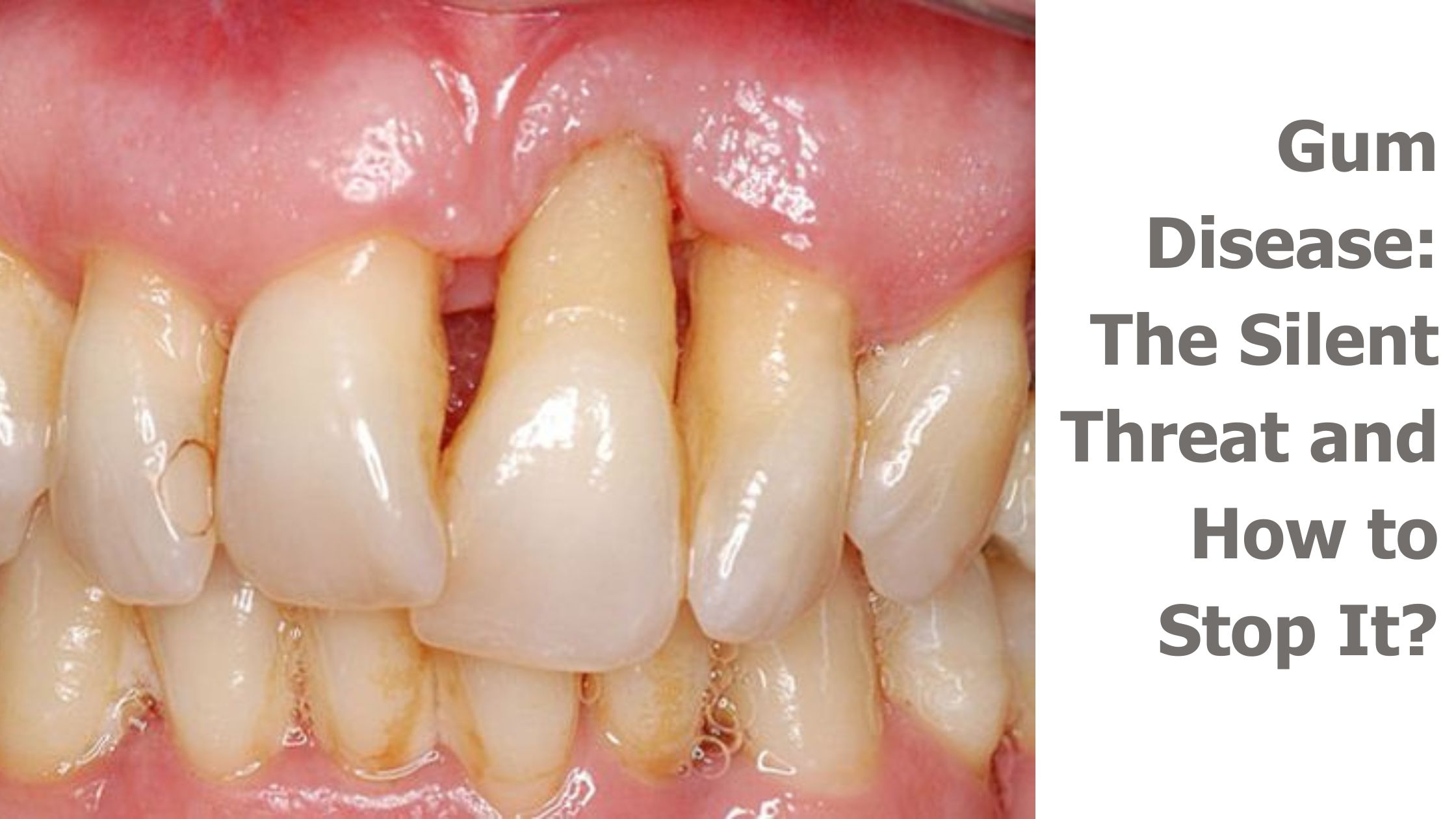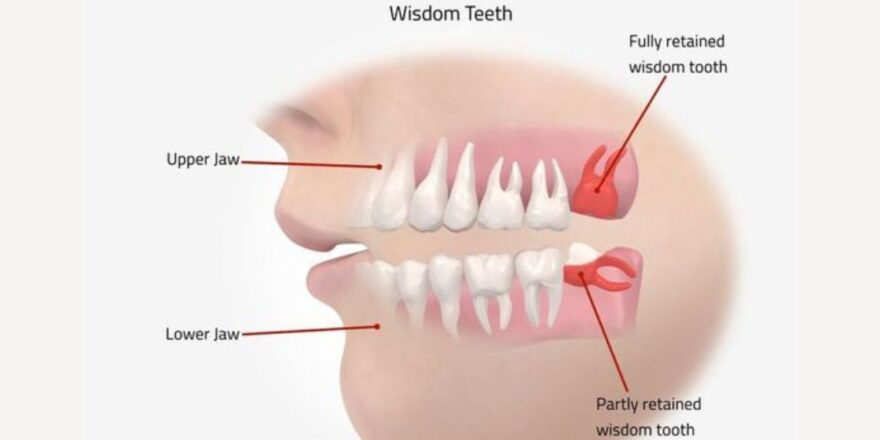Gum disease, or periodontal disease, is a prevalent oral health problem that impacts millions globally. Despite its widespread occurrence, it frequently remains undetected until considerable damage has taken place, earning it the title “the silent threat.” This blog aims to shed light on the insidious nature of gum disease, its risks, symptoms, and how to effectively prevent and treat it to maintain optimal oral health.
Understanding Gum Disease
Gum disease is an infection impacting the supportive tissues around your teeth. It starts with plaque accumulation, a sticky bacterial layer that forms on the teeth. If not regularly removed through brushing and flossing, plaque can turn into tartar, which necessitates professional cleaning to remove. Persistent plaque and tartar can result in more significant and damaging effects over time.
Gum disease progresses in stages:
Gingivitis
The initial phase of gum disease involves gum inflammation, presenting with symptoms such as redness, swelling, and bleeding when brushing or flossing. This early stage is reversible with appropriate oral hygiene practices and professional dental treatment.
Periodontitis
If gingivitis is left untreated, it may advance to periodontitis. At this stage, the inner gum layer and bone begin to separate from the teeth, creating pockets. These gaps between the teeth and gums can trap debris and become infected. As plaque extends below the gum line, the immune system attempts to combat the bacteria. However, the toxins released by the bacteria and the body’s reaction to the infection can lead to the breakdown of the bone and connective tissue that support the teeth. Without intervention, this damage can lead to the loss of bone, gums, and supporting tissues, potentially causing teeth to loosen and require removal.
The Dangers of Gum Disease
The consequences of untreated gum disease extend beyond oral health, impacting overall health and well-being. Here are some of the risks associated with gum disease:
Tooth Loss: Gum disease is the primary factor behind tooth loss in adults. As the supporting tissues and bone deteriorate, teeth can become loose and eventually fall out.
Heart Disease: Research has established a link between gum disease and cardiovascular disease. Gum disease can cause bacteria and inflammation to enter the bloodstream, potentially leading to plaque accumulation in the arteries. This buildup can increase the likelihood of heart attacks and strokes.
Diabetes: Gum disease and diabetes are closely connected, influencing each other in both directions. Gum disease can complicate the management of blood sugar levels, while elevated blood sugar levels can worsen the condition of the gums.
Respiratory Issues: Bacteria from infected gums can be inhaled into the lungs, potentially causing respiratory infections and worsening conditions such as chronic obstructive pulmonary disease (COPD).
Pregnancy Complications: Pregnant mothers with gum disease face an increased risk of preterm delivery and having babies with a lower birth weight. The inflammation and bacteria can affect the developing fetus.
Symptoms to Watch For
Gum disease can be painless, making it easy to overlook. However, being vigilant about the following symptoms can help in early detection and treatment:
Swollen, Red, or Bleeding Gums: Healthy gums should be firm and pale pink. Red, swollen, or bleeding gums are often the first signs of gum disease.
Persistent Bad Breath: Also known as halitosis, this can be a sign of ongoing bacterial infection in the mouth.
Receding Gums: If your teeth appear longer or you notice pockets forming between your teeth and gums, it could indicate gum recession.
Loose or Shifting Teeth: As the disease progresses, it can cause the teeth to loosen or shift, affecting your bite.
Painful Chewing: Discomfort or pain while chewing can be a sign of advanced gum disease.
Preventing and Treating Gum Disease
To prevent gum disease, it’s essential to practice excellent oral hygiene and schedule routine dental check-ups. Here are some steps to help safeguard your gums:
Maintain Good Oral Hygiene:
Brush Twice Daily: Use a fluoride toothpaste and brush your teeth at least twice a day. Make sure to brush along the gum line where plaque tends to accumulate.
Floss Daily: Flossing helps eliminate plaque and food debris from between your teeth and beneath the gum line, areas that a toothbrush can’t access.
Use Mouthwash: Antimicrobial mouthwashes can reduce bacteria and plaque, helping to prevent gum disease.
Regular Dental Check-Ups:
Professional Cleanings: Even with good oral hygiene, plaque can build up and harden into tartar. Regular professional cleanings can remove tartar and help prevent gum disease.
Early Detection: Regular dental visits allow for early detection and treatment of gum disease, preventing it from advancing to more severe stages.
Healthy Diet:
Balanced Nutrition: A diet rich in minerals and vitamins supports oral health. Foods high in vitamin C and calcium are particularly beneficial for gum health.
Avoid Sugary Foods and Drinks: Consuming sugary foods and drinks can lead to plaque accumulation. Minimize their consumption to lower the risk of developing gum disease.
Quit Smoking:
Tobacco Use: Smoking poses a major risk for gum disease by compromising the immune system and making it more difficult to combat gum infections. Stopping smoking can lead to better gum health and enhance overall well-being.
Professional Treatments
If you are diagnosed with gum disease, your dentist will recommend appropriate treatments based on the severity of the condition:
Scaling and Root Planing: This deep cleaning process entails eliminating plaque and tartar from both above and below the gum line, as well as smoothing the root surfaces to foster healing and deter future accumulation.
Medications: Your dentist may prescribe antibiotic gels, mouth rinses, or oral antibiotics to reduce infection and inflammation.
Surgical Treatments:
- Flap Surgery: This involves lifting the gums to remove tartar deposits and then suturing the gums back in place for a tighter fit around the teeth.
- Bone and Tissue Grafts: These procedures involve regenerating or replacing bone and tissue destroyed by gum disease to restore support for the teeth.
Take Action Today
Don’t let gum disease silently threaten your oral health. At Gravity Dental Poly clinic, we offer comprehensive periodontal care to diagnose, treat, and prevent gum disease. Our skilled dentists are committed to creating customized treatment plans designed to help you attain a radiant, healthy smile.
Schedule your appointment today and take the first step towards stopping gum disease in its tracks.
Remaining alert and proactive regarding oral health helps avoid the hidden risk of gum disease, ensuring a vibrant and healthy smile for years to come.
Investing in your gum health today can save you from more significant health issues in the future. Our team at Gravity Dental Poly clinic is here to support you every step of the way, offering expert care and advanced treatments to ensure your oral health is in the best hands. Don’t wait for symptoms to worsen—act now and secure a healthier, happier smile.




